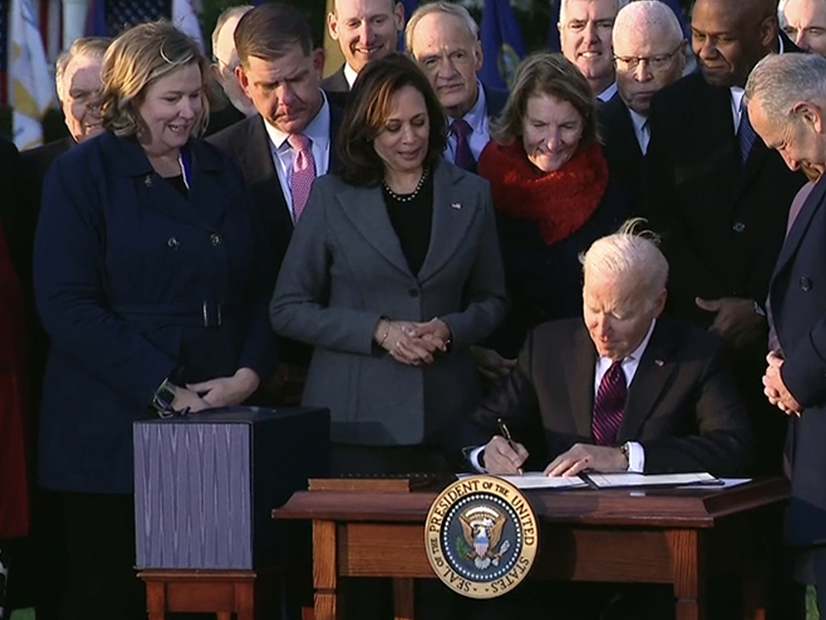The Biden administration announced this week that it will make $26 million available for projects to demonstrate that renewable energy and distributed energy resources (DER) can reliably power the U.S. electric grid.
The investment is part of the Department of Energy’s Solar and Wind Grid Services and Reliability Demonstration Program, created under the bipartisan Infrastructure Investment and Jobs Act that President Biden signed into law last November. (See Biden Signs $1.2 Trillion Infrastructure Bill.)
According to a press release Tuesday, the program is intended to “show how clean energy resources can address key reliability challenges facing the grid [with] tools and plant functions that allow the grid to stay online amid disturbances and restart if it goes down.”
“Americans do not have to choose between a clean grid and a reliable one as we move forward towards our goals of a net-zero economy by 2050,” Energy Secretary Jennifer Granholm said in the release. “Thanks to funding from [the] infrastructure law, DOE is proving that transitioning to solar, wind and other renewable energy sources can keep the lights on without service interruptions while creating good paying jobs.”
Distribution of the funds will be handled by DOE’s Solar Energy Technologies Office (SETO) and Wind Energy Technologies Office (WETO), the department said in a funding notice on Tuesday.
The program will focus on two key areas.
First is design, implementation and demonstration of wind and solar grid services, with $3 million to $6 million each earmarked for three to five recipients. For this category, the program will seek projects that produce at least 10 MW with solar, wind and storage and conduct long-duration demonstrations at existing facilities of their ability to provide grid services at scale. Organizers encouraged applicants to “develop centralized and/or autonomous local controls that demonstrate” the facilities’ ability to react to “operational commands and schedules in the existing … grid.”
The second topic is protection of bulk power systems with high contributions from inverter-based resources (IBR), planned for three or four projects at $2 million to $3 million each. This category is intended to promote large-scale studies of transmission protection systems with large amounts of IBRs, focusing on their response to faults. Recipients should be able to demonstrate protection modeling and simulation capabilities, along with technologies and strategies for maintaining reliability with “any level of inverter-based generation.”
Applicants are expected to include a range of BPS stakeholders, such as utilities, laboratories, universities, vendors of hardware and software, and engineering firms, with preference given to applications from teams of multiple institutions rather than a single organization. The department also encouraged teams to cultivate diverse backgrounds, for instance by partnering with historically Black colleges and universities or other organizations focused on minorities. SETO and WETO will provide a forum for interested parties to connect with each other.
An informational webinar on the initiative is planned for Aug. 17. Concept papers are due by 5 p.m. ET on Sept. 1.



